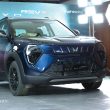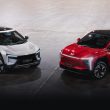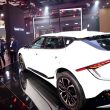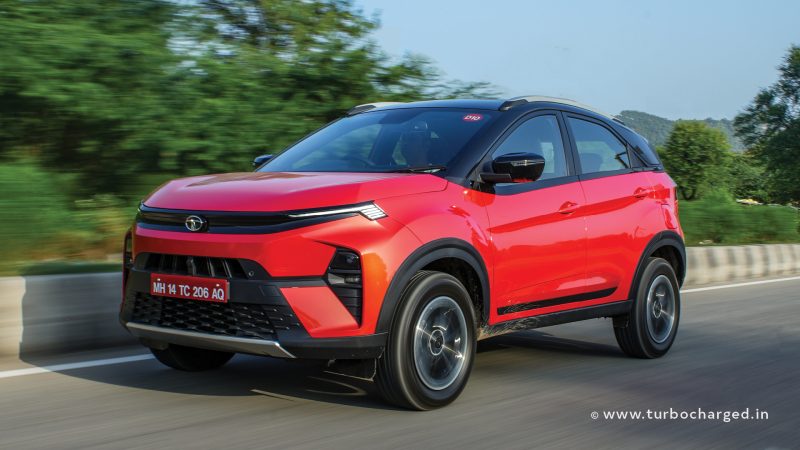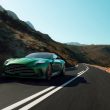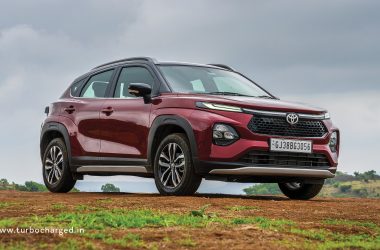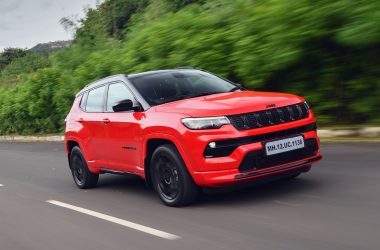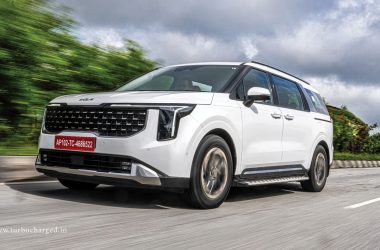Photography: Vaibhav Dhanawade
The Tata Nexon has proved to be a game changer – not just for Tata Motors, but the compact SUV segment too! It’s a product that has made competitors sit up and take notice with its success while also raking in serious volumes for the manufacturer. Its electric version has proved to be a runaway success too and is now a lot more than just a derivative of the ICE-powered Nexon, which you will read about in the following pages. Heck, the Tata Nexon has been India’s best-selling SUV for two years, which should give you a fair idea of its popularity and success. For now, though, let’s focus on the petrol and diesel versions of this uber-popular compact SUV.

Admittedly, it’s the bold purple colour that really makes this updated Nexon look and feel a lot more upmarket. A lot of the cool quotient comes from this new hue, besides the design of course. The DRLs look a lot more upmarket now, even reminding me of the Lamborghini Urus, especially on the purple version. In fact the front end looks all-new and you would be forgiven to assume this is a generation change, even though it isn’t, that’s how extensive the updates are! Of course, given its importance, the design team at Tata Motors, led by Martin Ulharik, seems to have poured its heart and soul into ensuring the updated Nexon is a class apart.
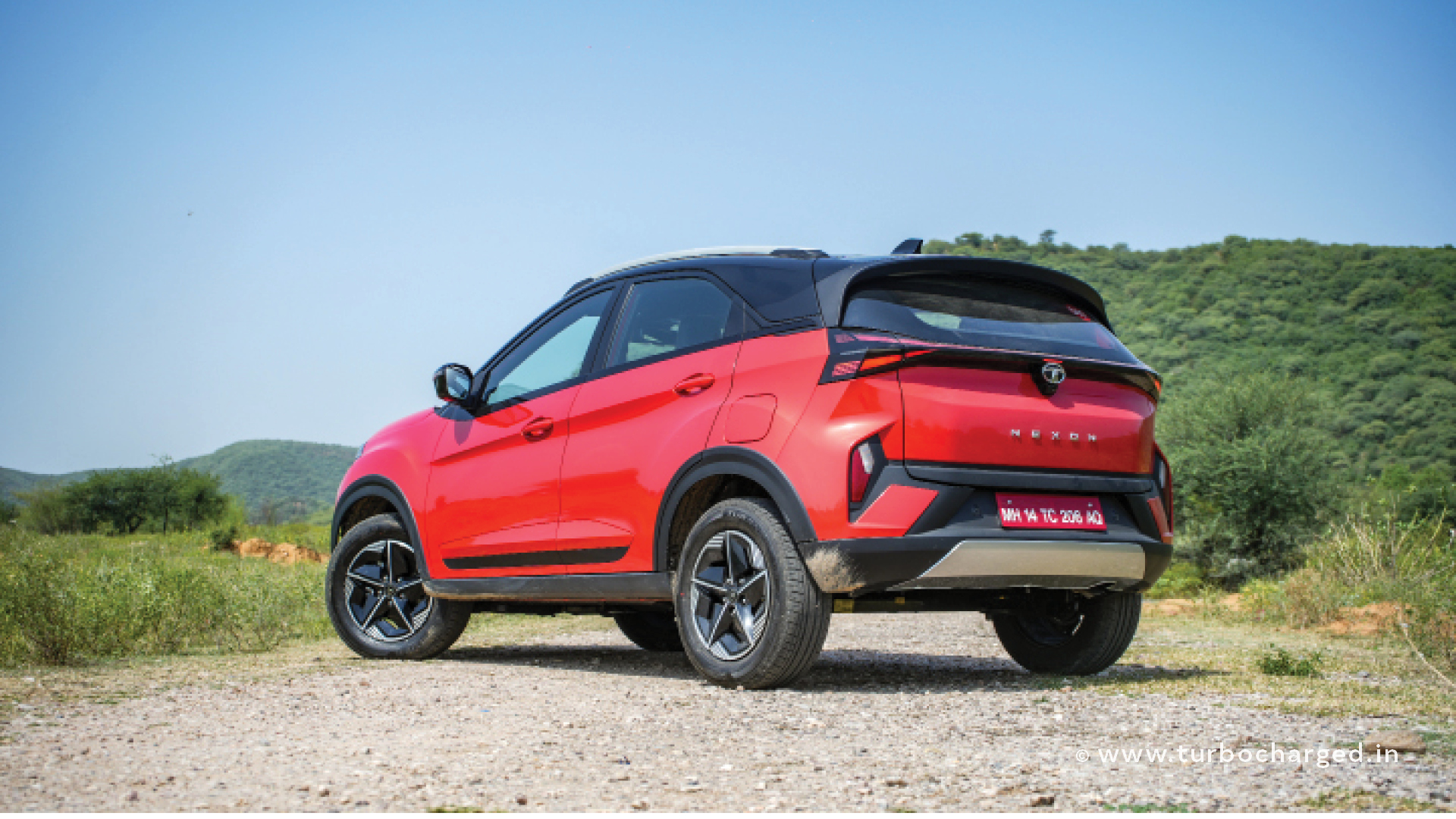
DRLs sit higher while the grille is all-new and does its bit in upping the Nexon’s premium quotient. The bumper has been redesigned too and houses the headlamps and overall, the front end looks heavily inspired by the Curvv concept. The stance from the sides remains the same, including the coupe-like roof, though the 16-inch alloy wheels are new. The rear end gets extensive changes too – there’s a large roof spoiler that conceals the rear wiper now, revised tail lamps and an LED strip connecting them, with a dynamic motion. The Nexon looks more SUV and less hatchback now thus, especially from the front, while retaining its class-leading ground clearance of 208mm.
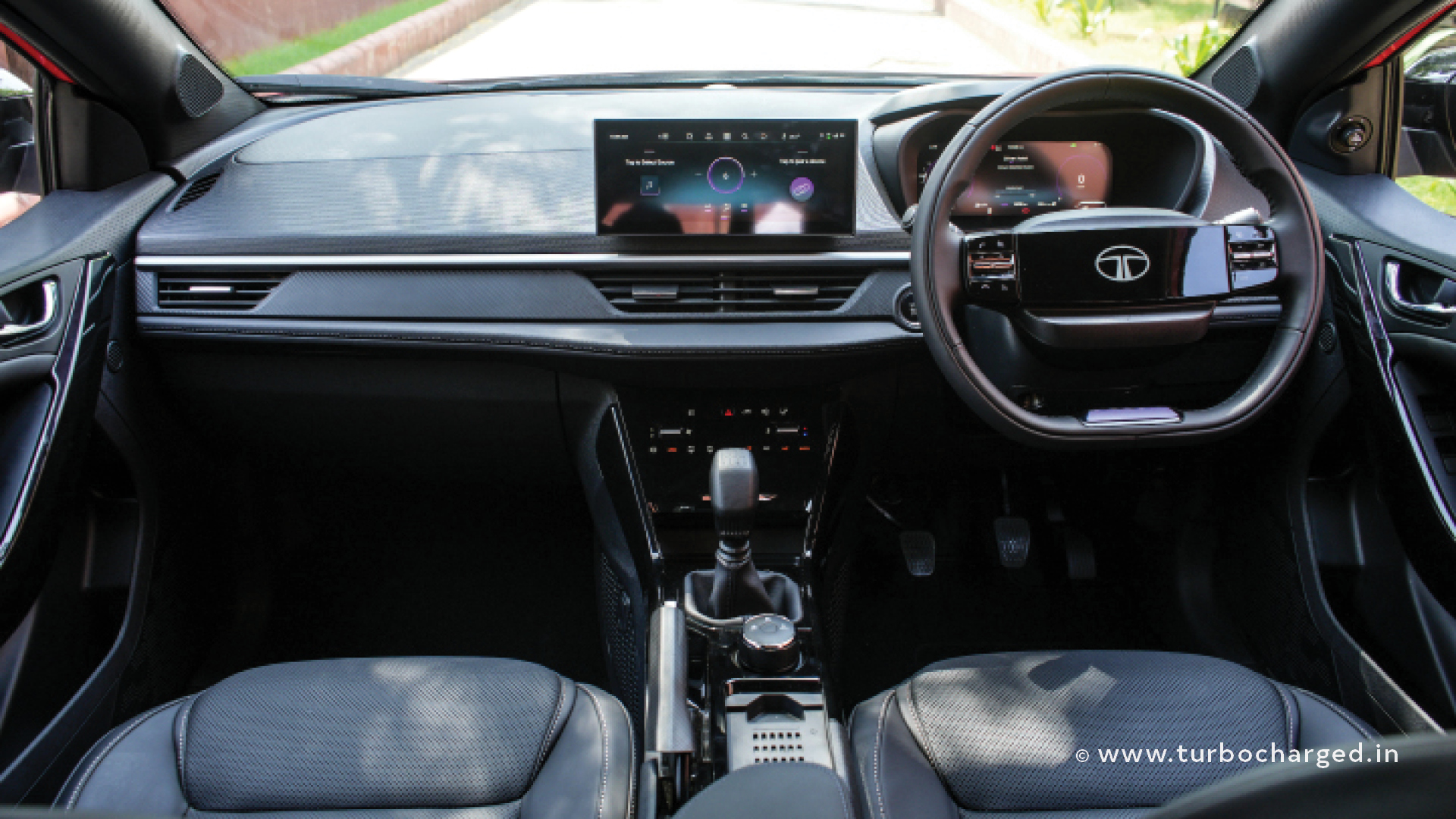
There are serious updates inside as well. It starts with the new steering wheel that has a massive piano black panel housing an illuminated Tata logo. It looks cools but the gloss black plastic is a fingerprint magnet and also prone to scratches. The dashboard design is cleaner, while a faux carbon fibre finish lends the cabin a sportier feel. The biggest highlight inside the cabin are the two high-resolution, 10.25-inch displays for the instrument cluster and infotainment system.
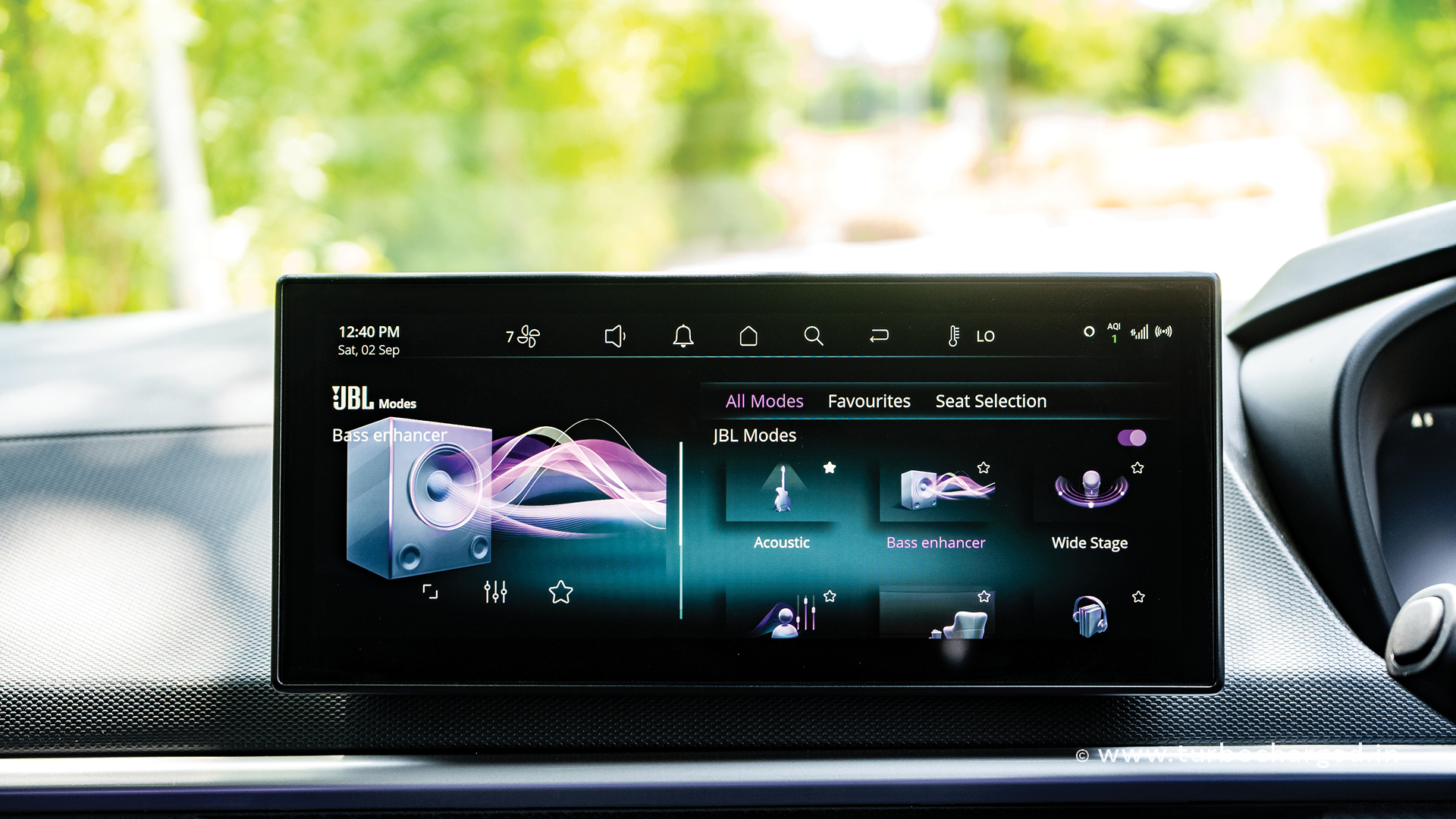
There’s a wireless charging pad too, to augment the wireless Apple CarPlay and Android Auto connectivity. Talking about features, there’s a long list of additions that put the Nexon right on top of the features game. Besides the aforementioned wireless smartphone connectivity you get 360 degree view, for which the infotainment smartly uses AI and offers a very detailed view of the car. Cameras all round also result in turn-indicator activated left and right views, another useful addition. The instrument cluster display looks brilliant and also integrates Google maps navigation in a full-screen format.
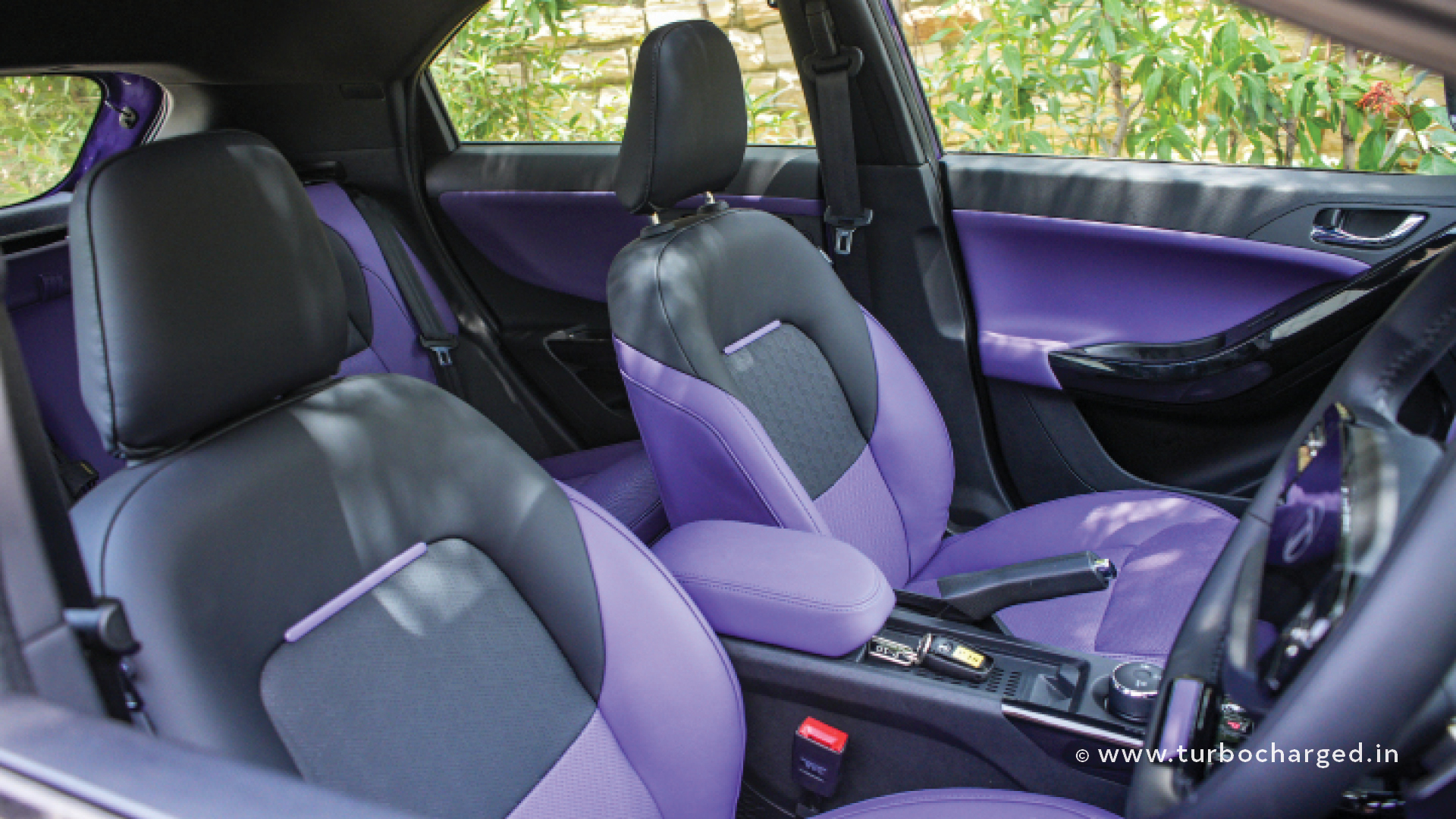
The centre console houses a large touch panel, finished in piano black, for climate control which looks cool. Reaching the USB port is a challenge like before, given the narrow recess the ports sit in. Seating, cabin space and boot space haven’t really changed as the Nexon is still the same car largely. Rear passengers do get AC vents and USB ports now though. You can also opt for body-coloured seats like the purple one you see here. Another highlight is the brilliant 9-speaker Harman music system with subwoofer. You also get voice commands, Alexa support, an AQI index, tyre pressure monitoring, connected tech and over the air updates.
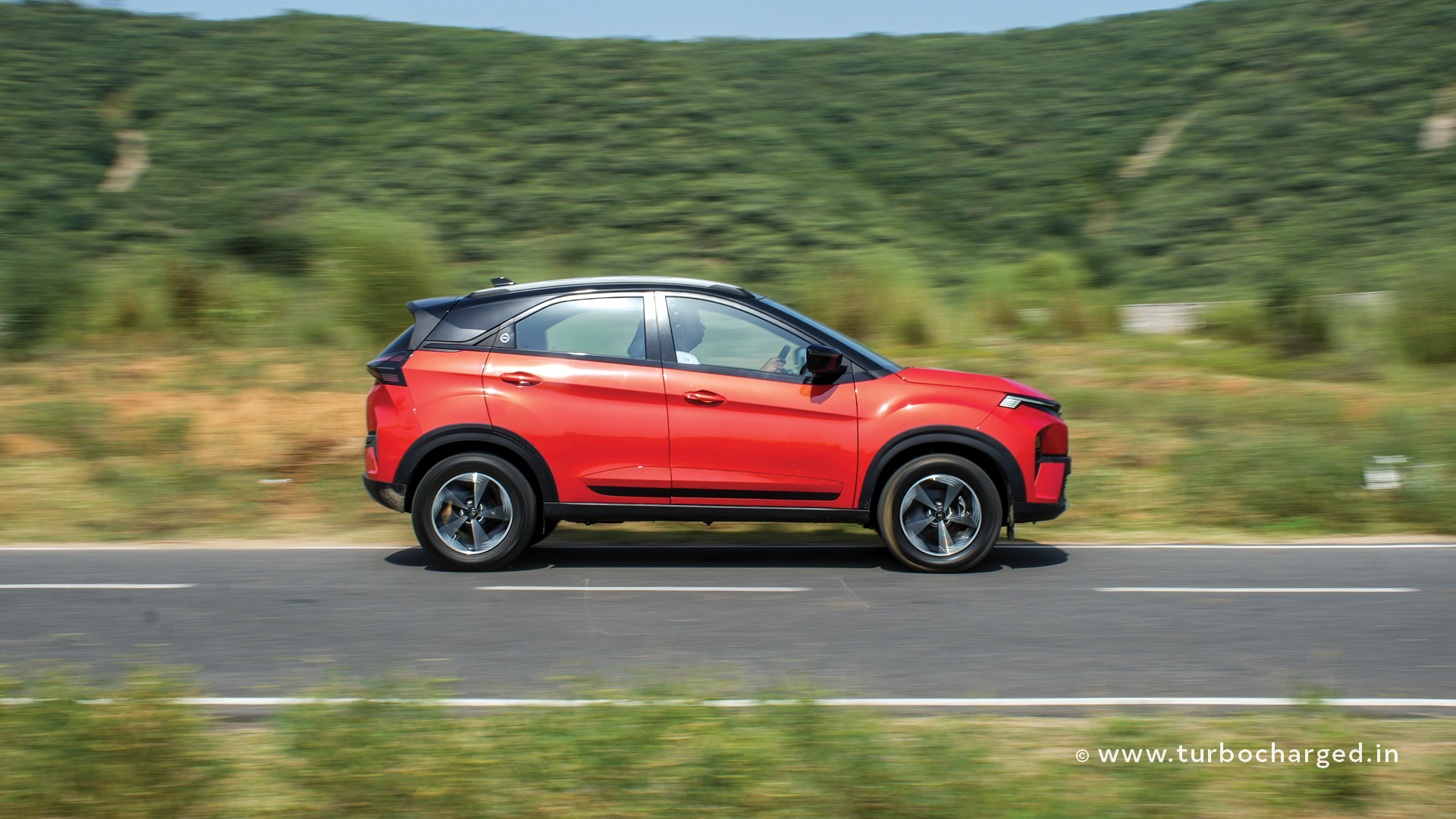
The petrol and diesel engines meet latest emission norms but are largely the same to say so. You can now opt for a 7-speed DCT with the 1.2-litre, three-cylinder turbocharged petrol engine which puts out 120PS and 170Nm and I certainly enjoyed using the paddle shifters too. There’s a likeable feel to the performance given the sprightliness and how quick the engine is to rev. Driving modes help and City mode suffices, though Sport does hasten things up nicely. Overall, the turbo-petrol and DCT are quite the combination thus. The diesel on the other hand is the same tried and tested 1.5-litre four cylinder unit putting out 115PS and 260Nm and is likeable for its torquey feel, which begins as you close in on the 2,000rpm mark. We only drove the manual version though, where I felt throws for the gearbox are still long albeit light.
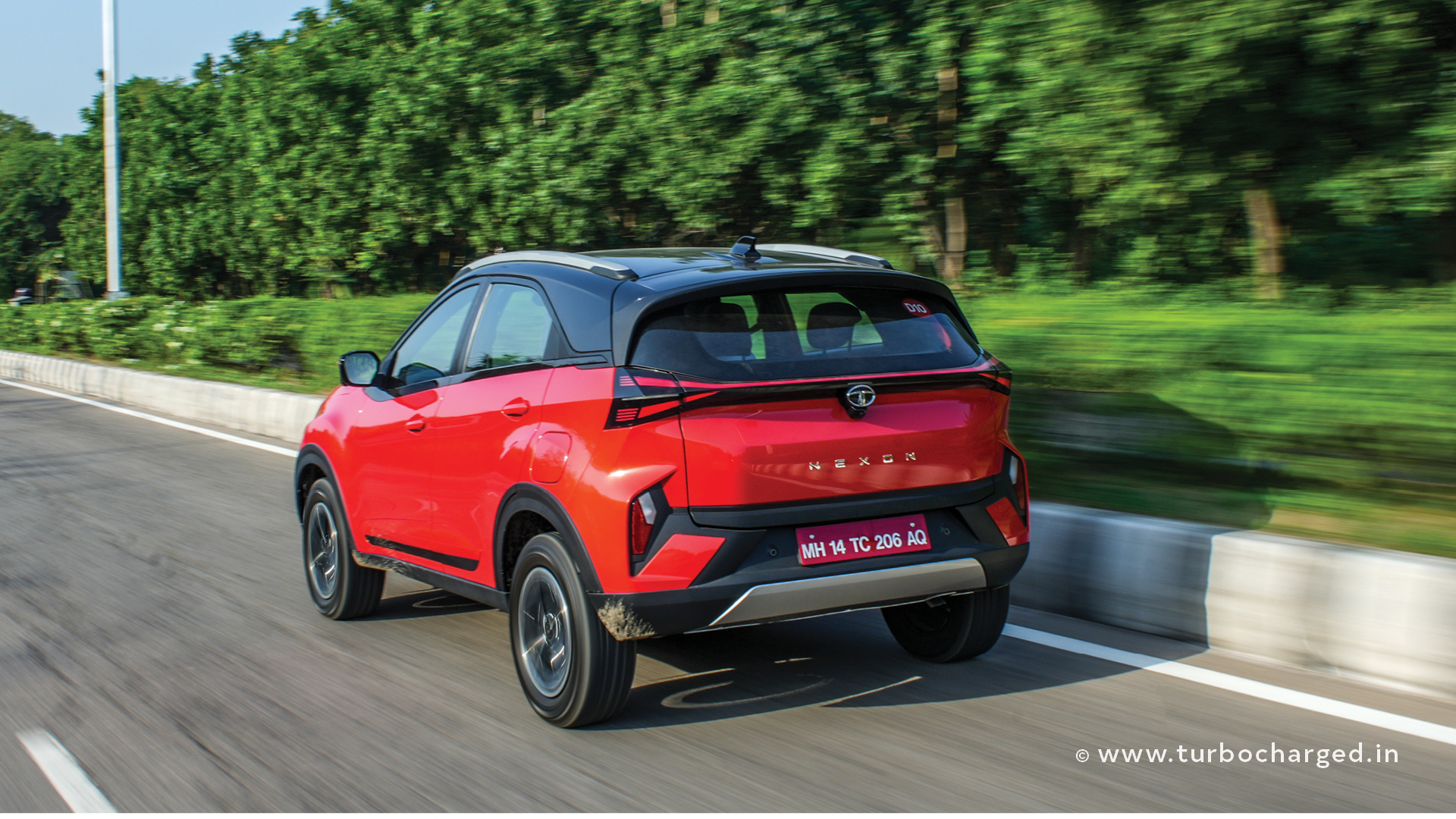
Dynamics haven’t really changed as the chassis is the same and the suspension has only got minor tweaks. There’s a hint of stiffness at low speeds but the ride gets better as you go faster and tackling bad roads is one of the Nexon’s strengths like before. I’ve always like how well-controlled body roll is and that’s a characteristic that hasn’t changed and makes for lots of confidence when going fast around corners. Overall, the Nexon continues to feel like a very competent package on the ride and handling front.
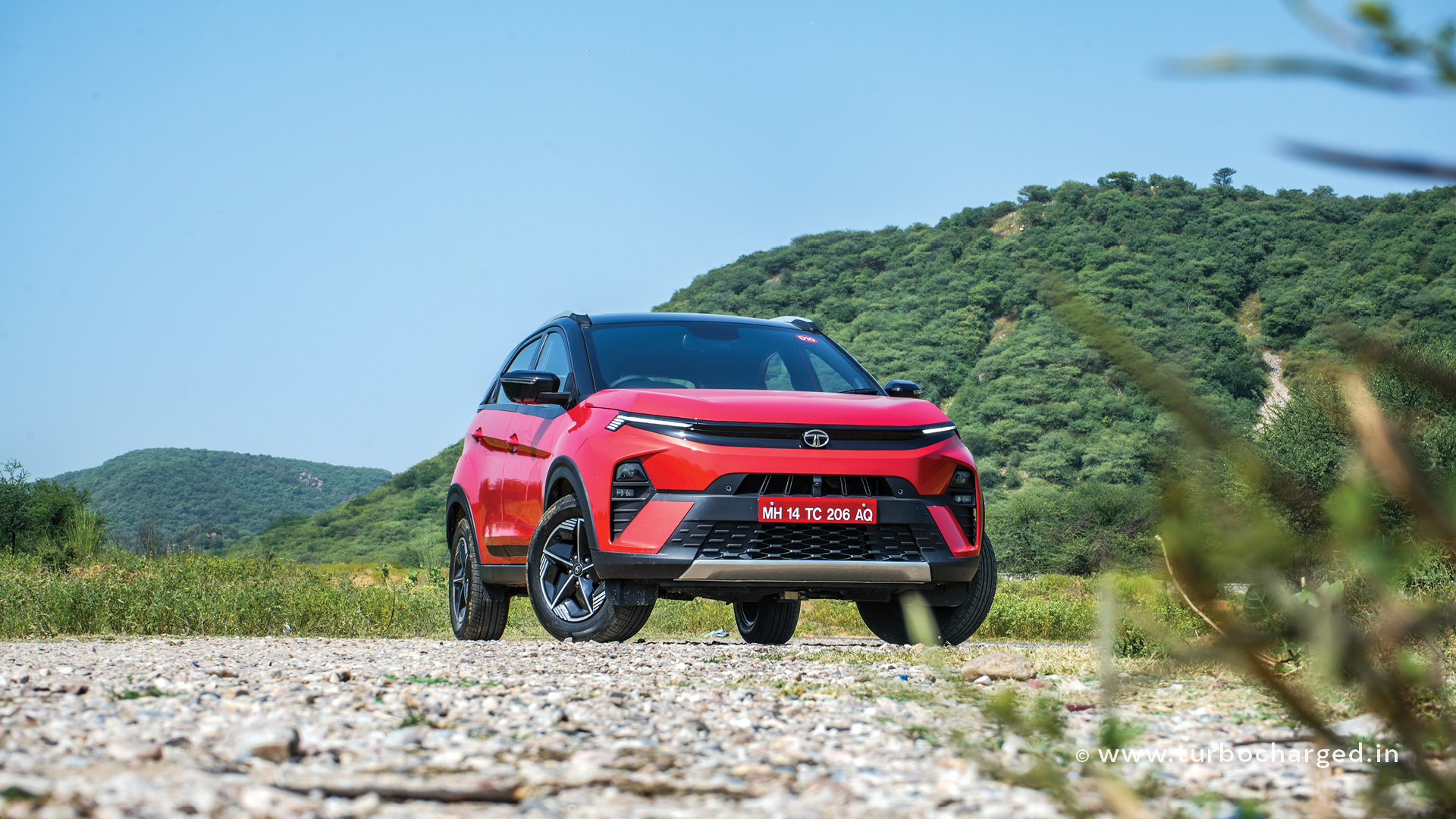
Prices begin from Rs 8.10 lakh for the base petrol and go up to Rs 15.50 lakh for the fully-loaded diesel AMT and admittedly, pricing is brilliant considering the Nexon’s packaging. The updates really help it feel more premium besides making it a far more compelling package given the new feature list. Overall, the Nexon looks set to continue its success story for Tata Motors without batting an eyelid.


